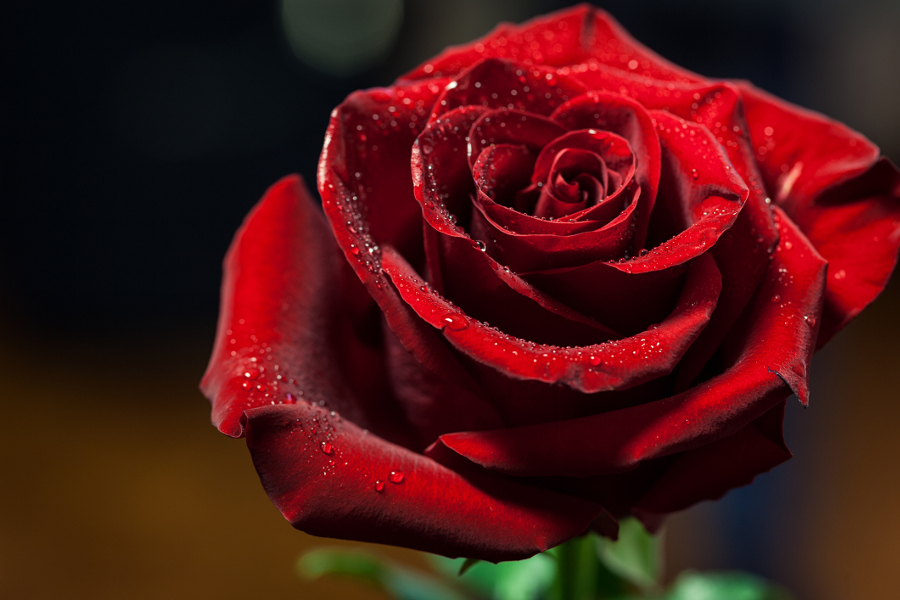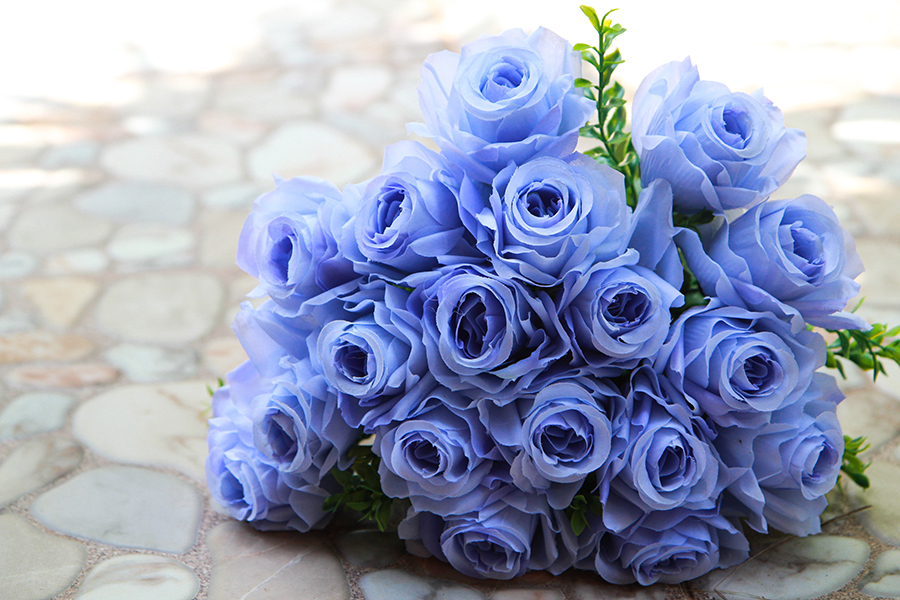The History and Symbolism of the Timeless Rose
Of all the blooms in the world, the rose has a more intimate relationship with humans than any other flower.
Jan 27, 2022
Of all the beautiful blooms in the world, the beloved rose has a more intimate relationship with the human race than any other. Archaeological finds confirm roses are among the earliest flowers to bloom on Earth, having first appeared in Asia before spreading wild across the entire Northern Hemisphere.
"According to fossil evidence, roses are 35 million years old," says Sharon McGukin, former president of the American Institute of Floral Designers and a floral décor specialist. "About 5,000 years ago, roses began to be cultivated in gardens, probably in China."

By 500 B.C., hundreds of books about the flower were being kept in the emperor's library, according to Chinese philosopher Confucius. Imperial love for the flower grew steadily and eventually reached near-dangerous levels. Due to the rose breeding habits of Han dynasty emperors, the blooms overtook so much of the nation's arable land (as well as its water supply) that the country began to experience food shortages.
"Roses were also grown extensively in the Middle East during Roman times," Sharon says. Egyptian queen Cleopatra was a known fancier of roses, using them in her attempt to romance (successfully, we might add) Roman general Mark Antony. Before visits from Antony, all fountains around Cleopatra's palace were to be fully refreshed with rose water, and the queen's personal chambers were to be filled ankle deep with rose petals.
Over a millennium later, a young playwright by the name of William Shakespeare penned the line “A rose by any other name would smell as sweet." Taken from his classic play "Romeo and Juliet," the line is spoken by Juliet to remind Romeo that despite the two of them being members of opposing houses of rule, their love remains genuine and true. In 1485, Henry VII declared roses to be England's national flower, and almost exactly 500 years later, President Ronald Reagan followed suit, naming the rose the national floral emblem of the U.S. during a press conference in — where else? — the White House Rose Garden.
The science behind rose symbolism
It's no surprise, then, that the rose, with its widespread global history, exists in over 150 species, including climbers, groundcovers, shrubby plants, and thousands of hybrids that come in a wide variety of shades and shapes. "The rose family is an important plant family of around 3,000 members," Sharon says. "You can see the resemblance when admiring the similar round, rose-shaped blooms of many fruit trees or berry vines."
With so many roses to choose from, gifting of the flower has developed a "language" all its own, wherein specific messages are said to be communicated by the sender according to the color and number of blooms in the arrangement. Red roses express romantic love, yellow the care of friendship. White roses symbolize innocence and purity, orange blooms convey passion and enthusiasm, and pink means admiration, thanks, and joy.

One especially unique rose is the blue rose, which, Sharon says, "does not exist in nature due to genetic limitations. Requests for blue roses, however, prompted the development of a dyed and cultivated variety with a blue-to-violet pigmentation." Appropriately, blue roses are said to embody mystery and achieve the impossible.
As for messages represented by the number of roses sent, one-bloom gifting is said to symbolize love at first sight, two mean a deep and personal love, and three roses mean "I love you." Seven roses express infatuation or love in its earliest stages, nine roses declare eternal love, and a dozen roses — the lover's special — are thought to mean everything at once.
Priceless roses around the world
Roses in the U.S. are generally a reasonably priced flowers suitable for crafting a heartfelt message for a loved one, but some are not meant to be purchased. One example of that is the Juliet rose, a pale, peach-colored garden rose first displayed at the 2006 Chelsea Flower Show and grown after a painstaking 15-year cultivation period. Destined to forever remain in its planter, this bloom holds an estimated worth of $15.8 million.
Our planet's most priceless rose, however, may be the "Thousand-year Rose," which Australian newspaper The Maitland Mercury reports to be the single oldest-living rose bush known to man. A Rosa canina variety, also known as a wild dog rose, the plant snakes nearly all the way up the 70-foot high and 30-foot wide outer wall of a cathedral in Hildesheim, Germany.
Throughout history, humans have appreciated the rose for much more than just sights and smells. In fact, the oldest variety of rose, the Rosa gallica officinalis, or "Apothecary's Rose," is, as its name suggests, used by herbalists in crafting elixirs. "Roses continue to be used today for oils, perfumes, and medicinal purposes," Sharon says. "Rose water is often used in jellies or Asian foods (and to make ice cream!), and rose hips are also a great source of vitamin C and can be used in herbal teas."
In some religious circles, roses are believed to represent spiritual wellness, the result of God's work in people's lives. Regardless of personal beliefs, Sharon reminds us that we should all follow the age-old suggestion this National Rose Month and "stop and smell the roses" — which is to say, slow down and enjoy the beauty of life.










